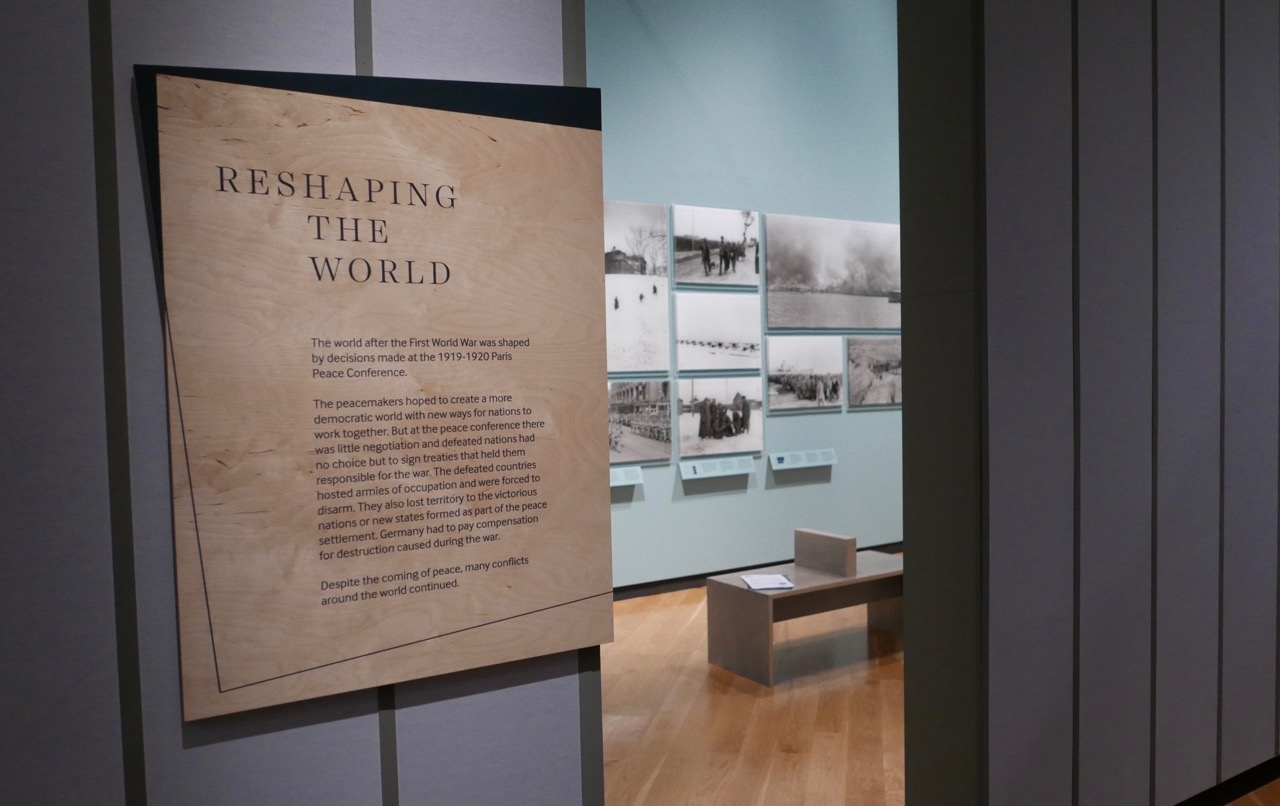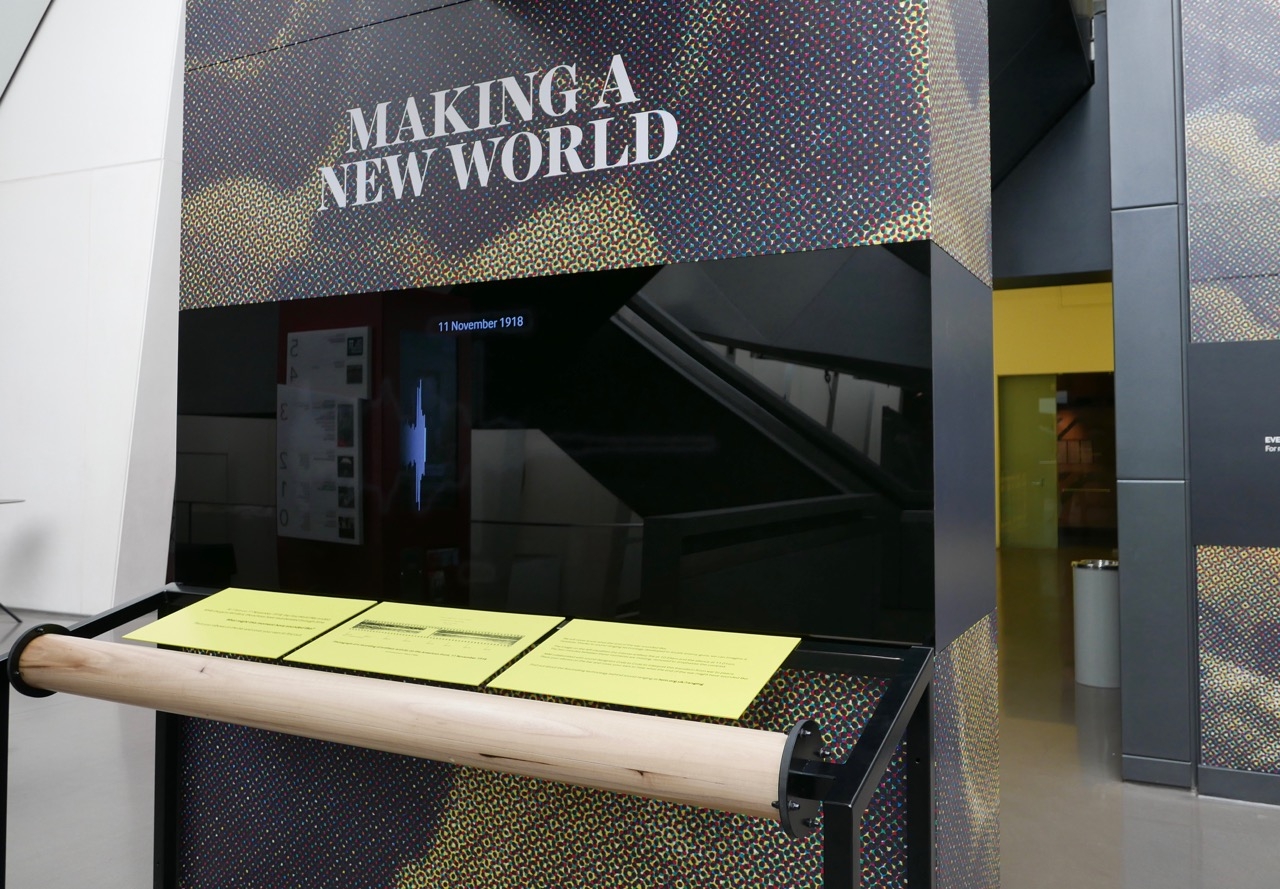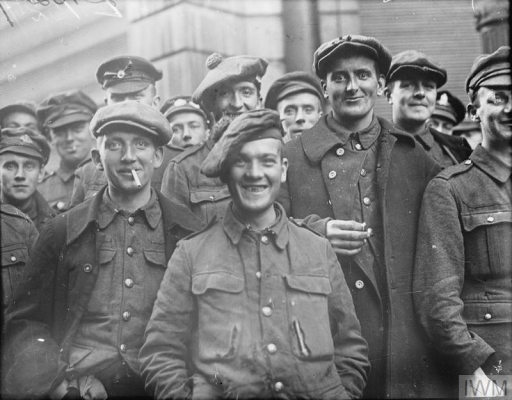Four exhibitions have opened at the Imperial War Museum in London as part of Making a New World, IWM’s season of events marking the end of the First World War Centenary.
In 1918, the guns continued firing on the Western Front right up until eleven o’clock on the morning of November 11, when the armistice came into effect after more than four years of unparalleled bloodshed.
In Room of Voices, a collection of recordings from IWM’s own archive, people who fought and lived through the Great War talk about their reactions to that extraordinary moment, starting with the sudden silence.
“At eleven o’clock the noise of the gunfire just rolled away like you hear a peel of thunder in the distance, and it just faded, and it was quiet,” recalls a soldier. It was eery. I can’t express how I felt but I offered up a little prayer to thank that I was still alive at the end of the war.”

The faces behind some of the voices recorded by IWM between 1973 and 2013 (Photo Centenary News)
What followed was a mix of elation tempered with grief for those who would not return, then a growing sense of frustration, as the realities of looking for work kicked in for millions of men coming out of uniform.
“What struck me most was that nobody wanted to know,” observes a veteran who was unemployed for 18 months.
Silence, and its central role in remembrance – a subject explored in greater depth in Lest We Forget? at IWM North, Manchester – is the theme for Moments of Silence, another of the sound installations.
The Great Powers drew heavily on troops from their colonies in Africa and Asia to support the 1914-18 war effort, yet the contribution of these forces was soon overlooked when it was all over. The extent of that role is conveyed in artist John Akomfrah’s multi-screen film installation, Mimesis: African Soldier, combining a wealth of historical footage with newly shot scenes.
John Akomfrah says: “We have obligations to the dead, historian Carlo Ginzburg once said. Honouring the untold sacrifices made by the many thousands of soldiers, labourers and carriers from a colonised Africa is an obligation. And I am proud to honour it.”

From the Armistice, the story is taken forward in Renewal: Life after the First World War in Photographs, a display of 130 pictures showing how countries and individuals emerged from the devastation.
There’s an important reminder here that for many, the Armistice didn’t mark the end of conflict. Ireland’s war of independence broke out soon afterwards, Russia was engulfed in civil war, revolutionary unrest swept Germany, there was fighting between newly independent Poland and Ukraine, and war also started between Greece and Turkey.
More positively, historic towns such as Ypres were painstakingly rebuilt – revealed in a sequence of lantern slides taken over several years – while in Britain, wartime hostels designed for workers at the Gretna munitions plant became the model for new local authority housing across the country, and civil aviation took off.
For Alan Wakefield, Head of First World War and and Early 20th Century conflict, the exhibition is an ‘insight into the innovation, opportunism and resourcefulness’ that shaped the post-war world.
“Both surprising and inspiring, it highlights the ingenuity of the human spirit in a time of unprecedented social and political change,” he notes.
Yet gazing into eyes of the leaders of the ‘Big Four’ assembled for the Paris Peace Conference – Georges Clemenceau, David Lloyd George, Vittorio Orlando and Woodrow Wilson – what really sticks in the mind is the flawed post-war settlement.
And that raises a question – is our view of this period in general largely overshadowed by the knowledge of what followed, another world war fought on already familiar battlefields, spreading even wider, and reshaping the global order once more? Food for thought at this well-balanced exhibition.
 This installation enables visitors to both hear and feel the rumble of gunfire fading away on the 11th hour, of the 11th day of the 11th month (Photo: Centenary News)
This installation enables visitors to both hear and feel the rumble of gunfire fading away on the 11th hour, of the 11th day of the 11th month (Photo: Centenary News)
Making a New World, a series of free exhibitions, is at IWM London until 31 March 2019. It also includes ‘Lest We Forget?’ at IWM North, Manchester, until 24 February 2019.
See also in Centenary News:
Poppy sculpture ‘Wave’ in Centenary finale at IWM North
Reporting from IWM London by CN Editor
Images courtesy of Imperial War Museums, © IWM Q 9687 (British POWs); Centenary News (exhibition)
